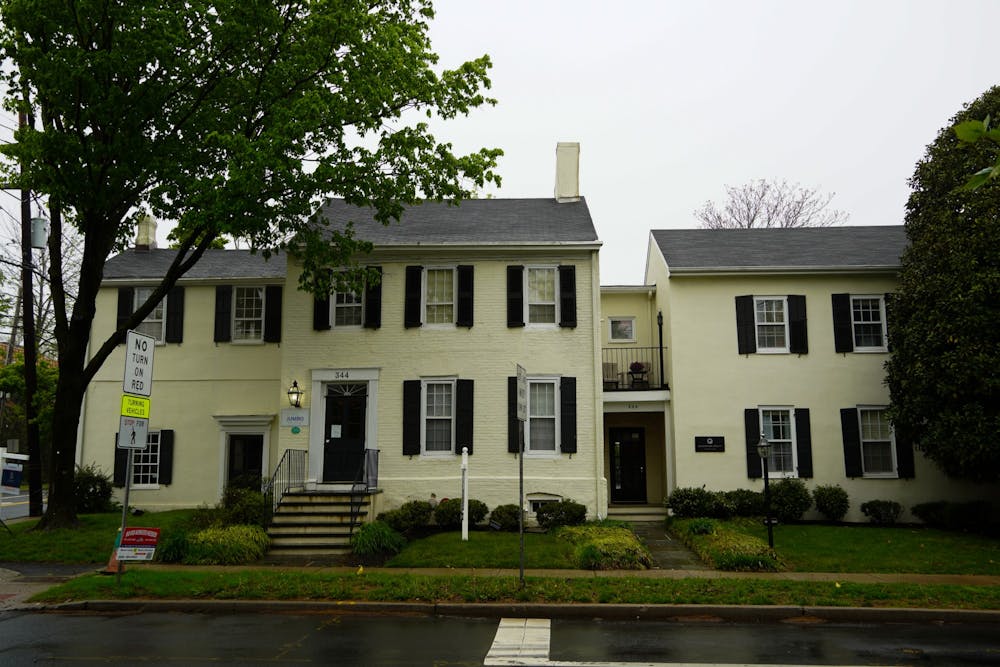A proposed affordable housing development in Princeton is facing opposition from local residents who cite the historic nature of the neighborhood and the size of the proposed developments.
Princeton’s Town Council passed an Affordable Housing Overlay (AHO) Ordinance in 2020. The measure is a formal zoning provision that allows further development of affordable housing on specific lots. The zones “are established to incentivize redevelopment consisting of multi-family residential uses, with an affordable housing set-aside, along with ground-level retail, service, commercial and office uses to reinforce the existing development pattern of the corridor defined, primarily, by Nassau Street,” according to the ordinance.
Some of the lots specified in the ordinance are in the Jugtown Historic District, located at the intersection of Harrison and Nassau Streets. Earlier this year, a “Save Jugtown Historic District” petition on Change.org was created by Catherine Knight, a resident of Jugtown. The petition alleged that the AHO ordinance is not in compliance with a separate ordinance: the Princeton Historic Preservation (HP) Ordinance. While she states that she supports the addition of affordable housing in this neighborhood, the concerns are with the “mass, bulk, and setbacks allowed.”
The HP ordinance states that plans should not “adversely affect the ambiance, character, and appearance of the historic preservation district and the relationships among structures and between structures in public ways in the district.”
The petition has 1,076 signatures as of Thursday, May 11.
The Jugtown Historic District consists of 23 houses in Princeton. According to a nomination form by the National Register of Historic Places Inventory, the District notes that “seven of the houses are in part or entirely of eighteenth-century construction; six date from the first half of the nineteenth century, [and] five date from the early twentieth century.”
According to the Historical Society of Princeton, notable houses include 342 Nassau St, known for housing American and British troops during the Revolutionary War; the Red Farm House, representing Princeton’s agricultural past; the Hornor House, plausibly a point of rest and refuge on the Underground Railroad; and 323-325 Nassau St., which Historical Society of Princeton called “one of the most authentic 18th century structures still standing in Princeton.”
The name “Jugtown” was inspired by the earthenware created at some of the first buildings. The town designated the area as a local historic district in the 1990s.
According to Town Topics, the proposed addition to the Jugtown district is 45 feet tall and will be placed behind two two-story buildings at 344 Nassau St. (Hornor House). RB Homes is responsible for the creation of an apartment building with 20 units, four of which are designated as affordable. This project was reviewed by the Planning Board on Feb. 2 and by the Princeton Historic Preservation Commission on Feb. 27.
In a statement sent to The Daily Princetonian, Councilman David Cohen wrote that “[t]he governing body is committed to Historic Preservation as one important value among many guiding our approach to planning for the future of Princeton.”
“Providing more diverse housing opportunities and more subsidized affordable housing are two other important values informing our decision-making,” he added.
The AHO Overlay Zoning Ordinance is supposed to “provide a realistic opportunity for the construction of affordable housing” for “low- and moderate-income households” on Nassau Street.

The controversy over Jugtown comes in the context of longstanding issues of housing inequality and shortages in Princeton. As of November 2019, the town’s affordable housing waitlist was over 2,000 households long. Neighborhood-based income inequality has also persisted; as of 2021, the median household income of Witherspoon-Jackson, Princeton’s historically Black neighborhood, was $47,000, far short of the $138,000 median for the entire town.
Demands in the petition include that new buildings should be a maximum of three stories and that their design should be visually compatible with the rest of the buildings in the Jugtown Historic District.
“AHO-2 needs to be amended to fully adhere to the provisions of Princeton’s Historic Preservation Ordinance [by] specifying the appropriate maximum height and minimum setbacks in order to maintain the historic character of [Jugtown],” the petition notes.
Several Letters to the Editor in Town Topics have been written by residents sharing their opposition to the development. In a March 29 letter, Eva Siroka expressed that the project “would damage Jugtown’s historic setting” and that the majority of profits would be received by builders and investors. She called for the “town’s planning board and related agencies to propose a new plan to first favor [Jugtown].” Similarly, on April 5, Walter Frank wrote that while “well-done residential housing projects can be a real blessing to a community,” the “proposed project is in a particularly sensitive portion of a historic district [and] should be carefully considered.”
According to Cohen, the controversy has recently come to “both the Planning Board and the Historic Preservation Commission for concept reviews to get feedback [that] will shape the design going forward.” Cohen affirmed that they are “in conversation with all parties worthing to find a solution that optimizes outcomes for both Historic Preservation and [the] creation of more housing in [the] key Smart Growth location.”
Lia Opperman is an associate News editor for the ‘Prince.’
Louisa Gheorghita is a News contributor for the ‘Prince.’
Please send any corrections to corrections[at]dailyprincetonian.com.








